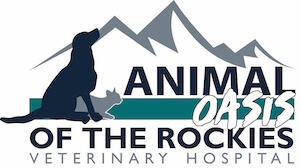Dr. Adrienne Tosto
Animal Oasis Of The Rockies Veterinary Hospital- Contact Us
What is involved in a dog wellness exam?
In a dog wellness exam, the main thing, the first thing we always do is the actual physical examination itself. This is a very important part of dog wellness. We look from nose to tail at everything with the dog, so the teeth, eyes, ears, and nose, listen to their heart and lungs, feel for any lumps or bumps, and feel their joints. That alone gives us a lot of information, and we can pick up on things just from the exam itself.
How does dog wellness impact the longevity of my pet?
Ensuring that a dog stays healthy and feeling their best has been seen to ensure a longer lifespan.
Will additional testing be needed beyond a wellness exam?
It just depends on what's found during the exam. If there are any abnormalities seen on the exam, that could trigger further action. For example, if we feel their legs and their joints feel like they might be a little painful or have a reduced range of motion, then we might recommend X-rays to see things further. Sometimes, just from talking to the owners, if there are changes in their habits, such as drinking more, urinating more, or changes in appetite, that might indicate we should run some blood work to screen some values and take a closer look. So it depends on what we find in the exam and what we hear from the owner's history at home.
How soon should I bring my pet in to see a veterinarian for a wellness exam?
Typically, we recommend at minimum once a year, and then depending on if there's anything that we're monitoring or following up on, potentially more often than that. Once they reach a certain age and they're getting a little bit older, they age very quickly. So, we usually recommend at least a physical examination every six months.
Why is early detection of health issues in my dogs so important?
If we can catch things early, sometimes during routine wellness exams and blood work, we can identify issues before they show clinical signs. For example, kidney values might start elevating before the dog shows clinical signs of kidney disease. There are diet changes, environmental changes, and other interventions that can help slow the progression of the disease. Early detection can really help ensure a long and healthy life.
What is geriatric dog screening?
Geriatric dog screening involves more specialized tests as dogs get older. They age a lot quicker as they get older, so we usually recommend additional screening. This might include a more comprehensive blood work panel, x-rays of the chest, and imaging such as abdominal ultrasounds to look for any abnormalities. Other tests might include blood pressure and eye pressure measurements. These tests can help catch issues early and ensure a healthy life.
If you have any other questions, please give us a call at (303) 900-7765. You can also email us at [email protected] and we will get back to you as soon as we are able. Don't forget to follow us on social media: Facebook and Instagram
